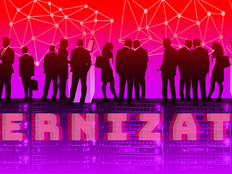One of the main aspects of identity, authentication and authorization, Sweden notes, “is who or what asserts or attests to that identity and the related authorization.”
Currently, there are a wide range of third parties and systems that attests to an identity for specific purposes, he says, but “blockchain affords one way to move from a third-party attester to self-assertion of an identity. Further, depending on how the blockchain is implemented, the blockchain can actually hide or protect the identity of the person or the thing, thus providing the additional benefits related to privacy.”
For example, blockchain technology can reveal only “as much data about a person or thing as is necessary to access a service or certain information,” Sweden says.
While NASCIO does not promote or endorse any specific technology or solution, he says, “blockchain technology has arrived on the scene with much promise as a capability for effectively managing identities in the digital economy.”
MORE FROM STATETECH: Find out how blockchain can help with toll collection.
Best Blockchain Use Cases for Identity Management
Blockchain for identity management has many applications for government and can be used for “anything that has a data lineage or history,” Sweden says.
That could be the identity of someone or something, and “anything that must have an up-to-date historical record substantiating provenance or transfer of ownership, traceability to creation and subsequent iterations,” Sweden says.
That includes everything from fine art to precious stones, deeds, contracts, authorizations, student records, professional training, criminal records, financial records, credit scores, the price history of anything, credentials, vital records, patents and the transfer of energy credits, Sweden says.
IBM is working with North Carolina on proofs of concept for blockchain identity management. One use case under consideration, Teigen says, is accelerating how identity is used across different state agencies. For example, first responders can gain access to different databases in an emergency without having to authenticate their identity for each, saving precious seconds and gaining situational awareness more quickly.
“You don’t want to have to worry about authenticating identities across 10 different systems,” he says. “A digital identity that carries through in that way is very useful.”
Blockchain could also allow medical professionals to demonstrate their state medical accreditations and credentials to be able to work across state lines in emergencies, such as pandemic response, Teigen says. “It accelerates and streamlines that sharing of that identity credential,” he says.
Blockchain can also help reduce fraud in the distribution of benefits by verifying citizens’ identities. The same idea can be applied to businesses and other entities.
Another example is a case where the state government “requires a complete record tracing back to its origin in order to deal with some future event,” Sweden says.
For instance, there may be a food product that causes a health concern. “It is necessary in that case to know the complete supply chain for that product, back to its original harvesting, processing, shipping, handling,” he says.
MORE FROM STATETECH: Find out how North Carolina wants to use blockchain tech.
How Blockchain for Identity Management Benefits State Government
One of the key benefits of blockchain identity management for government is cost savings, something government officials are always eager to tout, notes Teigen.
Those savings could be operational, in terms of needing less hardware and software. Most blockchain solutions can be deployed as a subscription-based cloud service that can be rolled out quickly.
“It’s no longer the days of multiyear waterfall development, where you don’t see the benefit of things until two years later,” he says. “In six weeks, you can have a proof of concept, and in 12 weeks you can have an operational pilot blockchain network.”
Another key benefit is an improved citizen experience and “making it as seamless and frictionless as possible,” Teigen says. “Wouldn’t it be nice if your identity could float across the city, county or tri-state area?”
State government is, by design, risk averse and cautious, NASCIO’s Sweden notes. “State government will normally not be the early adopter or pioneer. State government will typically wait until something has come out of that trough and has crossed the chasm before it is adopted in state government,” he says. “That is a reality inherent in state government. We are very careful about what and where we spend taxpayer dollars. There must be a competitive and comprehensive business case for any investment we make that demonstrates that investment is not only a good investment, but that it is a better investment than the alternatives.”
Blockchain technology is, by and large, still in an “evaluation phase” for state government.
“It is being seriously considered and even tested in some pilot projects. But the business case or the business need drives the search for business and technology capabilities,” Sweden says. “The business need is identity and access management. Blockchain looks like a viable set of capabilities for that business need. But I would say most states are still evaluating. They are not ready to fully embrace this technology.”












